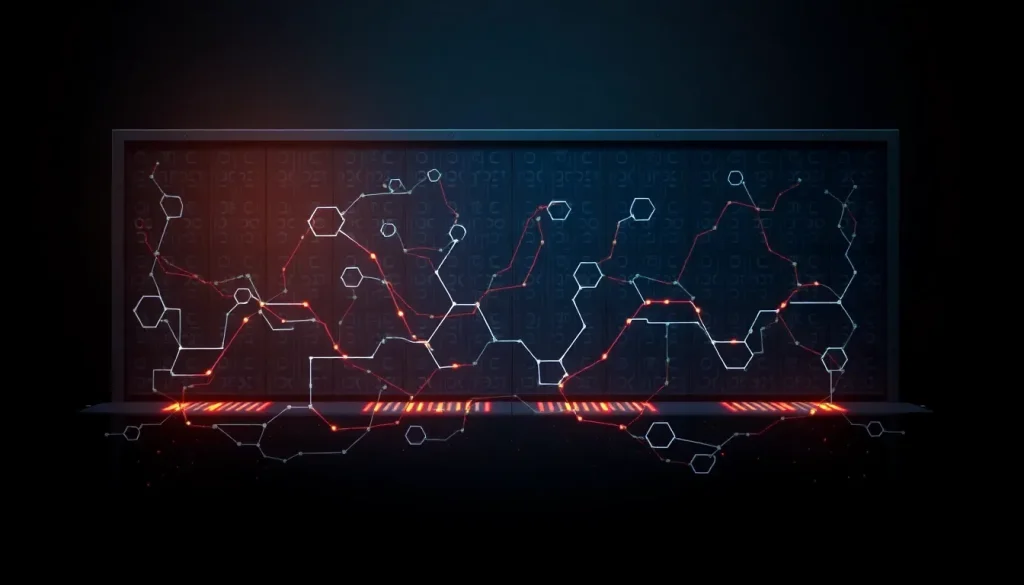Lenovo's Strategy for Integrating Infinidat Acquisition

As the digital landscape continues to evolve, the integration of advanced storage solutions becomes increasingly crucial for businesses looking to harness the full potential of their data. Lenovo's recent acquisition of Infinidat is set to reshape the enterprise storage market, promising a blend of innovation and robust capabilities. But how will these two distinct storage solutions coexist and complement each other? Let's explore the integration possibilities and implications of this significant acquisition.
- Understanding Lenovo's acquisition of Infinidat
- Exploring the integration landscape
- Data movement and access strategies
- System management integration
- Namespace and data fabric solutions
- Leveraging AI and advanced analytics
- Backup and data protection strategies
- Conclusion: A new horizon for Lenovo and Infinidat
Understanding Lenovo's acquisition of Infinidat
Lenovo’s decision to acquire Infinidat is a strategic move aimed at enhancing its enterprise storage portfolio. Infinidat is renowned for its high-performance storage solutions, particularly the InfiniBox system, which is designed for large-scale enterprise environments. This acquisition is expected to allow Lenovo to offer a more comprehensive range of storage solutions while addressing the diverse needs of its client base. However, both companies have remained mostly silent about how they plan to integrate their systems and technologies.
Infinidat's architecture is fundamentally different from that of Lenovo's current OEM relationship with NetApp, which presents both a challenge and an opportunity for integration. The InfiniBox operates on a 3-controller architecture, while NetApp utilizes a clustered dual-controller system. This divergence raises questions about compatibility and the potential for a seamless transition for existing customers.
Exploring the integration landscape
For Lenovo, creating a unified experience for customers using both Infinidat and NetApp solutions is critical. This integration could enable Lenovo to cross-sell products between the two customer bases, leveraging their unique strengths. One of the primary integration avenues lies in software, which can facilitate data sharing and management between the two distinct storage environments.
- Data Sharing: The immediate step would involve enabling data sharing across both systems, allowing users to access and utilize data regardless of its origin.
- Unified Management: Developing a management layer that covers both storage solutions can streamline operations for users.
- Federated Data Environment: Establishing a federated environment would provide a cohesive view of data assets across both platforms.
Both Infinidat and NetApp support various storage protocols, including block, file, and S3 object storage. This compatibility paves the way for creating data movers that can efficiently transfer data between the two systems, making integration more achievable.
Data movement and access strategies
To facilitate data movement, Lenovo can implement several strategies that allow seamless access between Infinidat and NetApp environments. While direct protocol-based access is possible, it is often limited to read-only scenarios. Here are some options Lenovo can consider:
- Block-Level Aggregation: Utilizing NetApp's FlexArray feature allows for importing LUNs from Infinidat, enabling block-level storage aggregation.
- Third-Party Migration Tools: Companies like Datadobi and Komprise can assist in developing migration plans for moving data across both platforms.
- Replication Services: Solutions like Cirrus Data can facilitate block-level data migrations between Infinidat and NetApp systems.
Furthermore, leveraging cloud as a bridge can simplify data access. For instance, businesses can replicate data from NetApp to S3-compatible cloud storage, allowing Infinidat to access this data through integrations with cloud services.
System management integration
One of the significant hurdles in integrating Infinidat and NetApp systems is the difference in their management interfaces. Both companies provide GUI and CLI management interfaces along with RESTful API access, but they lack direct compatibility. Here are some strategies Lenovo might employ to enhance system management:
- Developing Extensions: Lenovo could work on extending Infinidat’s InfiniVerse software to include management functionalities for NetApp.
- TruScale Monitoring Services: Expanding Lenovo’s TruScale services to cover Infinidat solutions could provide a cohesive management experience.
However, the success of these initiatives largely depends on collaboration with NetApp, as developing extensions for their control plane software may face resistance.
Namespace and data fabric solutions
Creating a unified logical view of both storage environments is paramount for effective data management. Software solutions like DataCore’s SANsymphony can virtualize storage across heterogeneous systems, allowing for:
- Pooled Data Resources: Facilitating data pooling, mirroring, and tiering across both environments.
- Synchronous/Asynchronous Replication: Providing high availability and ensuring data appears local within applications.
An alternative approach could involve utilizing Hammerspace’s Global Data Environment (GDE), which creates a parallel NFS-based file system for orchestrating data across both systems. This solution promises low-latency access for enterprise applications, enhancing performance and efficiency.
Leveraging AI and advanced analytics
As AI continues to permeate business operations, integrating AI capabilities into the storage solutions will be essential. Lenovo's AI Factory product set, which currently utilizes NetApp's hardware, can be expanded to incorporate Infinidat's offerings. This integration could provide:
- Enhanced AI Data Pipelines: Utilizing Infinidat’s capabilities to support AI workloads could yield significant advantages.
- AI-Driven Workflows: Developing workflows that leverage AI for data management and analytics will create a competitive edge.
Furthermore, Infinidat's existing AI-related software, such as the RAG workflow architecture, can be aligned with Lenovo’s offerings to create a robust AI ecosystem.
Backup and data protection strategies
Data protection remains a critical consideration in any storage strategy. Infinidat offers InfiniGuard, a powerful backup and cyber-resilience solution that could complement Lenovo's existing offerings. Opportunities for integration include:
- Cross-Selling InfiniGuard: Introducing InfiniGuard to Lenovo’s NetApp customer base as a backup solution.
- Partnerships with Data Protection Vendors: Collaborating with vendors like Cohesity and Rubrik can enhance backup capabilities for both storage environments.
By branding InfiniGuard under Lenovo’s ThinkSystem Storage line, the company can create a cohesive identity for its data protection solutions, further strengthening its market position.
Conclusion: A new horizon for Lenovo and Infinidat
Lenovo's acquisition of Infinidat presents a unique opportunity to redefine the enterprise storage landscape. By focusing on integration across data movement, system management, AI capabilities, and data protection, Lenovo can position itself as a leader in providing comprehensive storage solutions. The path forward will require strategic collaboration, innovative software development, and a commitment to delivering unified experiences for customers across both platforms. As the digital economy continues to expand, the successful integration of these two storage powerhouses will be pivotal in driving business innovation and growth.




Leave a Reply